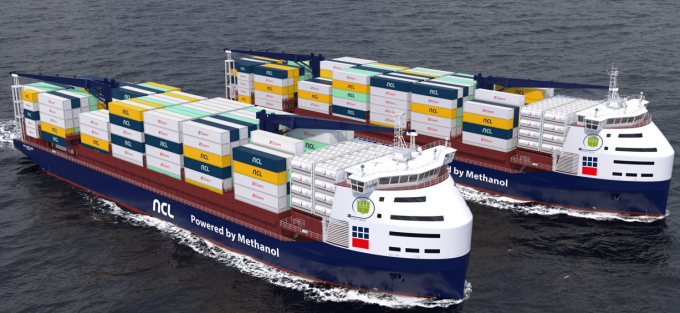Carriers look to short-term gains over blanking, as Red Sea crisis props up rates
With the Red Sea crisis continuing to artificially prop up container spot rates, carriers have ...

Shippers hoping the burgeoning overcapacity in global liner trades may lead to a prolonged period of cheap freight rates may be disappointed, delegates at this year’s S&P TPM24 conference in Long Beach were told.
According to Jan Tiedemann, VP of liner strategy at consultancy AXS Alphaliner, 819 containerships are currently on order, amounting to a total capacity of 6.99m teu and representing nearly 25% of current global fleet capacity – and which, combined with weak demand, has led to predictions of a crash in freight rates.
“The capacity coming is certainly huge, but it might not be as bad as some think,” he said, adding that a chief factor behind the rash of orders was “prices for new ships are going up and carriers have been trying to lock-in new orders before shipyard slots become completely full, and the vast majority of the new capacity will actually be delivered quite late.
“In addition, we expect ordering activity to be very low in 2024 and 2025, and most of the activity will be in the bulk and tanker sectors, which also need to modernise their fleets,” he explained.
Carrier ordering strategy is also evolving, Mr Tiedemann said, as the limitations of the ultra-large container vessel (ULCV) class has become increasingly apparent.
“For the first time we will be at a stage, in five years’ time, when the first generation of ULCVs are reaching an age when they are due to be retired, and at this point we will question whether to invest further in this type of vessel,” he said.
Currently, around 3.5m teu of the global fleet is over 20 years of age, with 7.9m teu over 15 years, representing nearly 28% of the fleet.
“These older ships use technology that was designed for another era, with hulls and engines designed to go at much higher speeds. We expect these vessels to be scrapped, because there are no secondary trade or niche markets for them to go to,” he said.
He added that the bulk of orders in 2021 was for ULCVs and neo-panamax vessels, “but now we are seeing orders for mid-sized vessels to replace the old panamax units”, with a strong emphasis on fuel efficiency and the capability to use alternative fuels.
“There is a new class of highly efficient, midsized ships, as well as plenty of orders for smaller feeders,” he explained.
Meanwhile, the Red Sea crisis and constrained capacity at the Panama Canal continue to soak up extra capacity, while slow-steaming initiatives also play a part.
“The extra two weeks transit time per round voyage on an Asia-North Europe service requires 16% additional tonnage to maintain service frequency, and the same for an Asia-US east coast service diverted round the Cape of Good Hope; while a reduction in sailing speed of 1.5-2 knots requires a 5.6% increase in tonnage,” he said.
Comment on this article